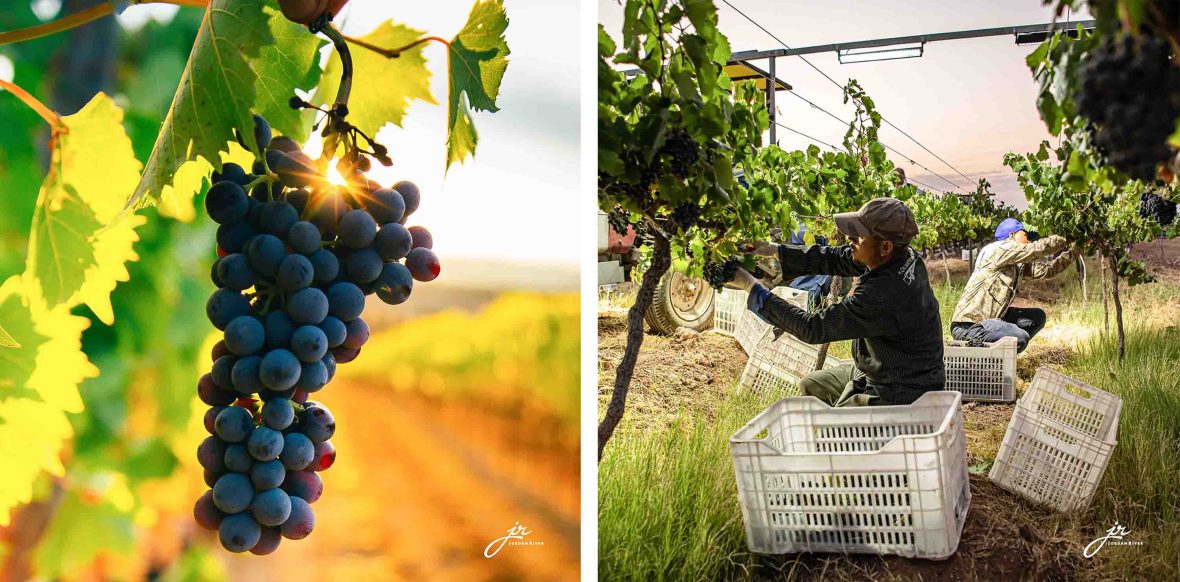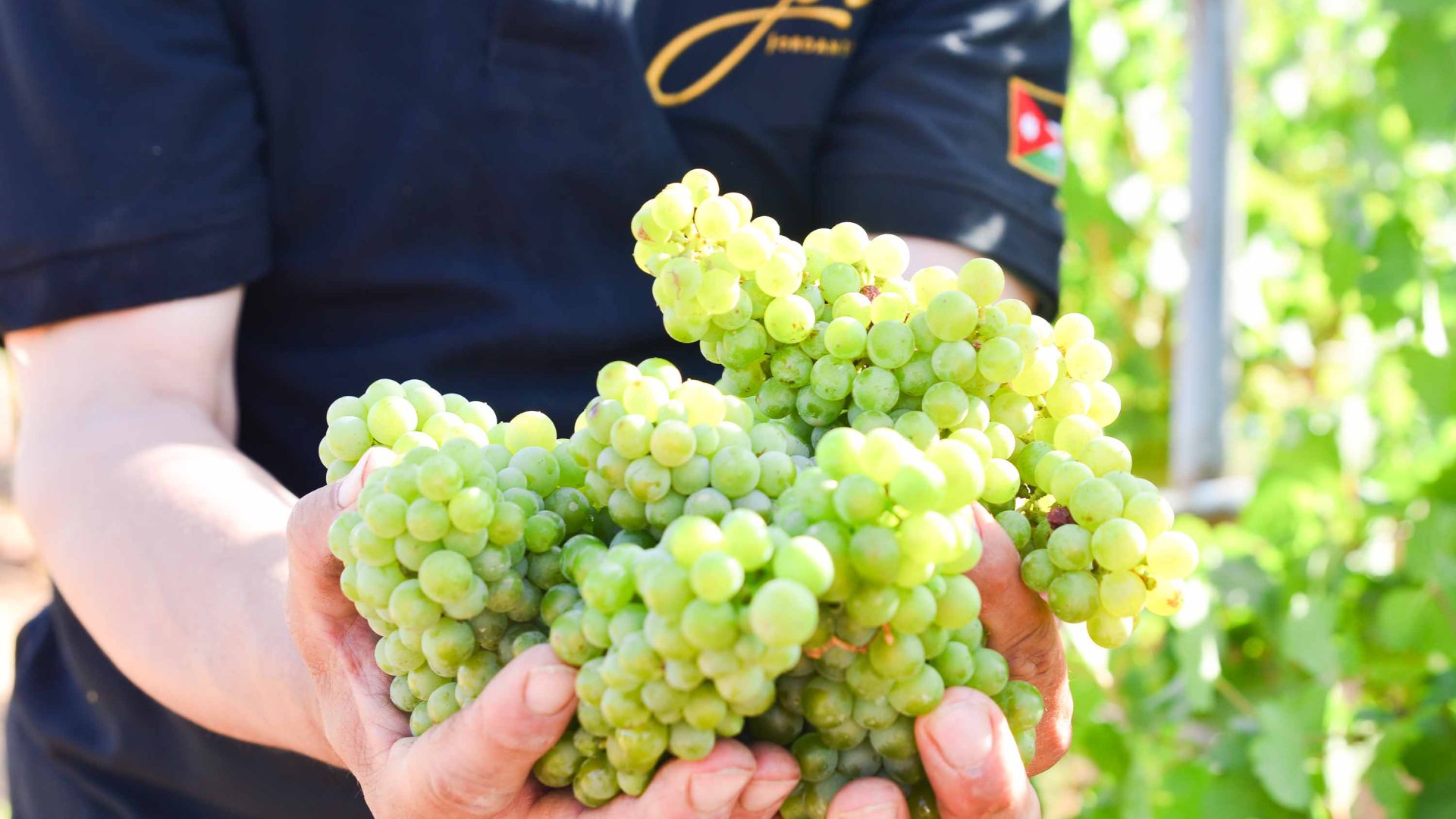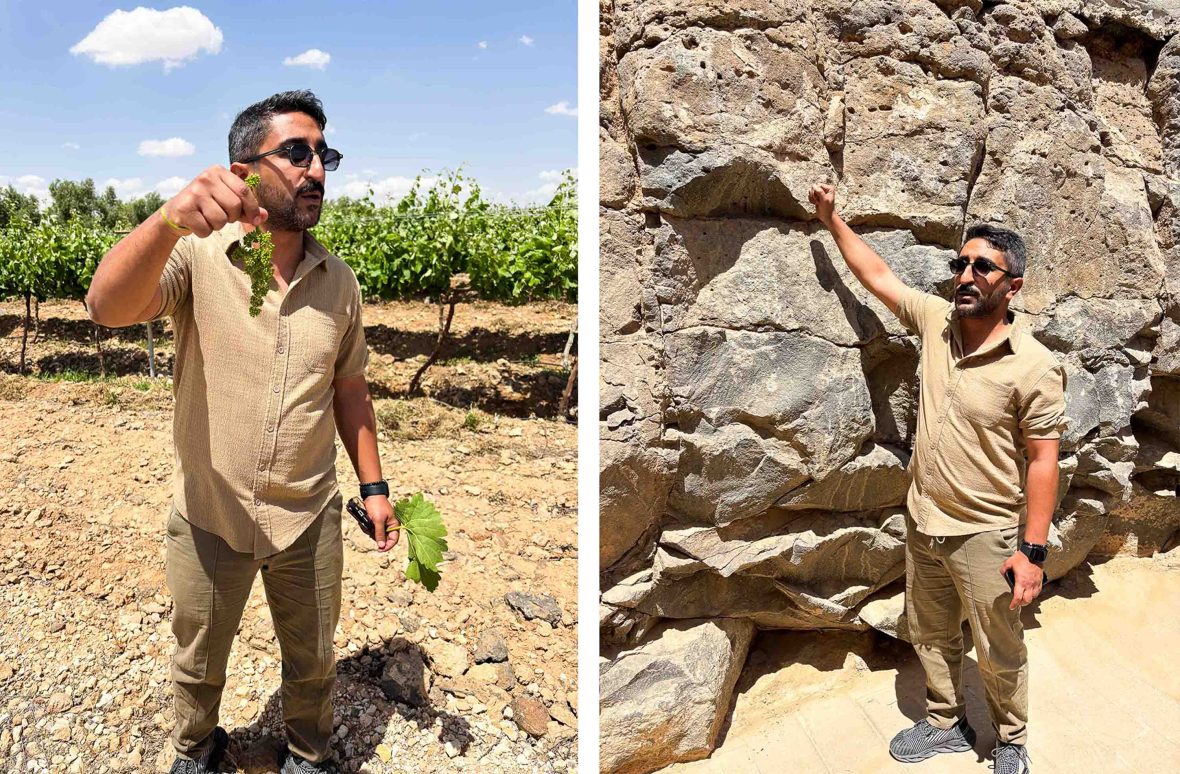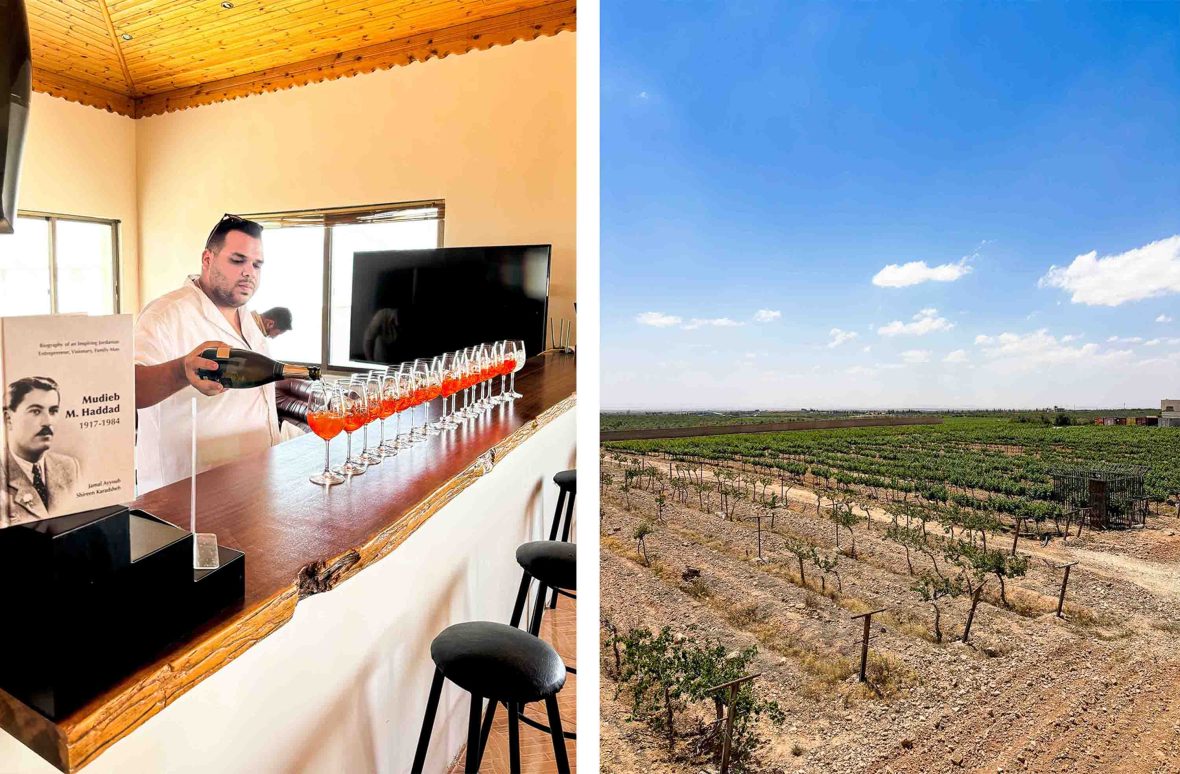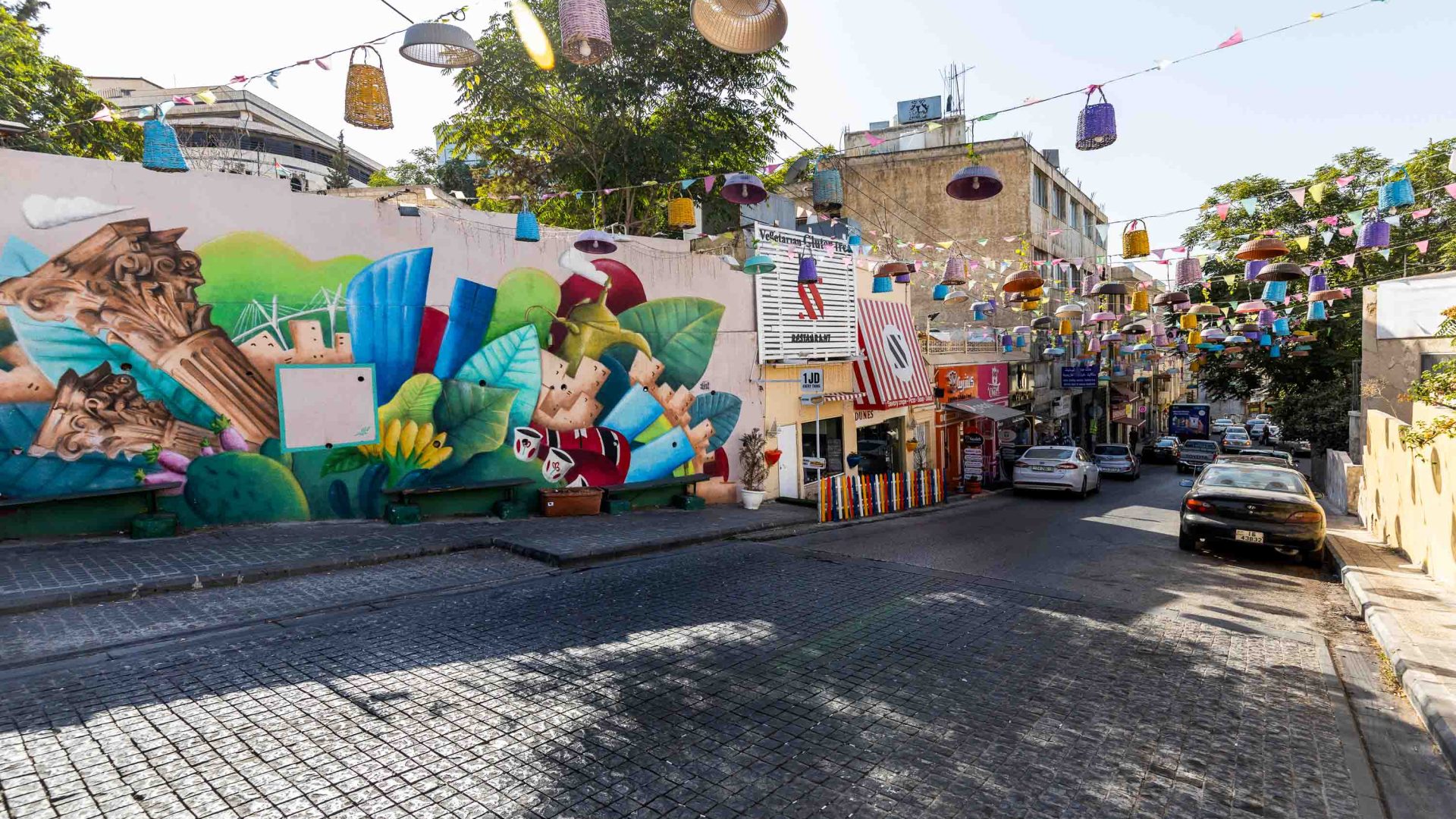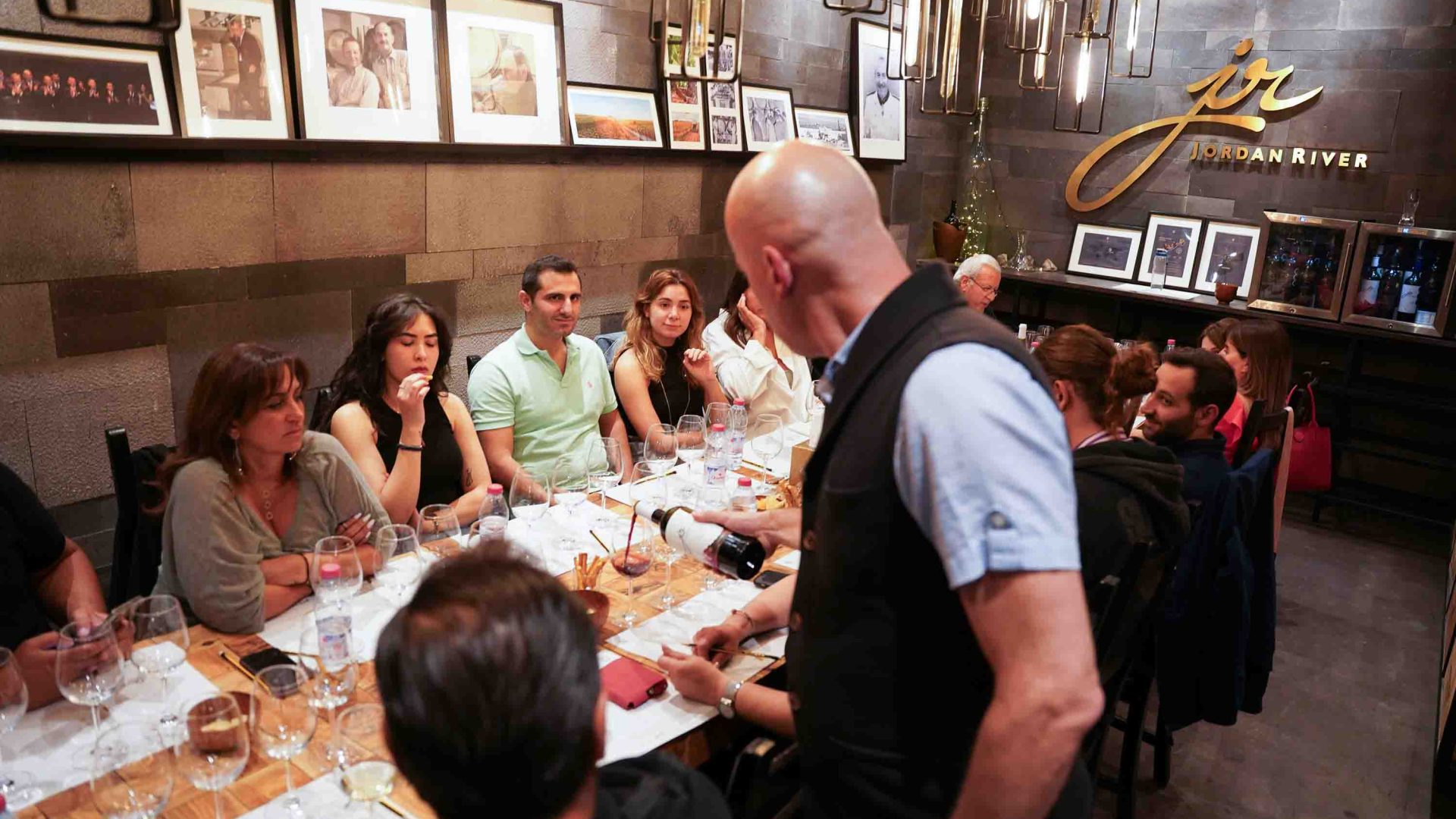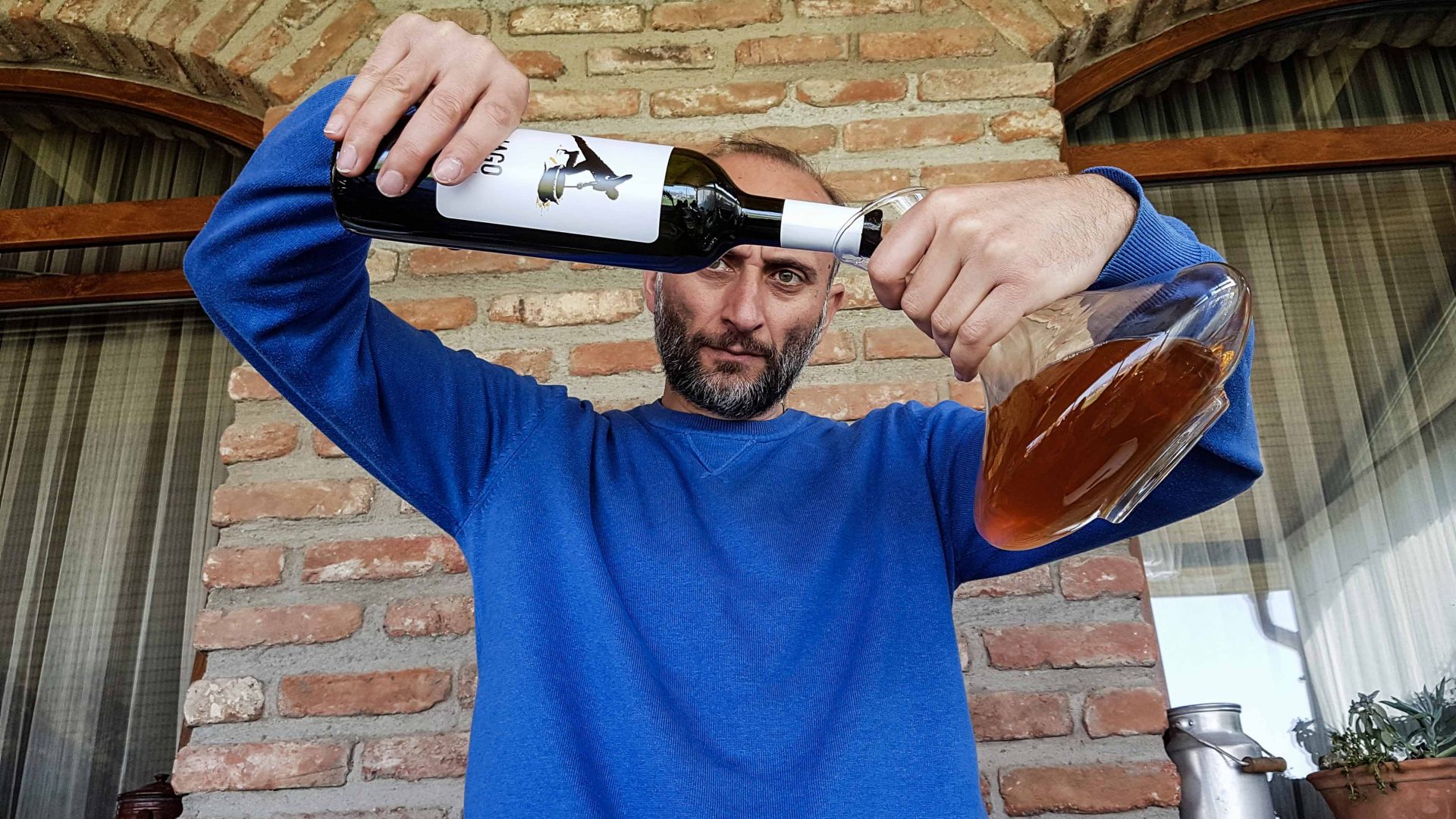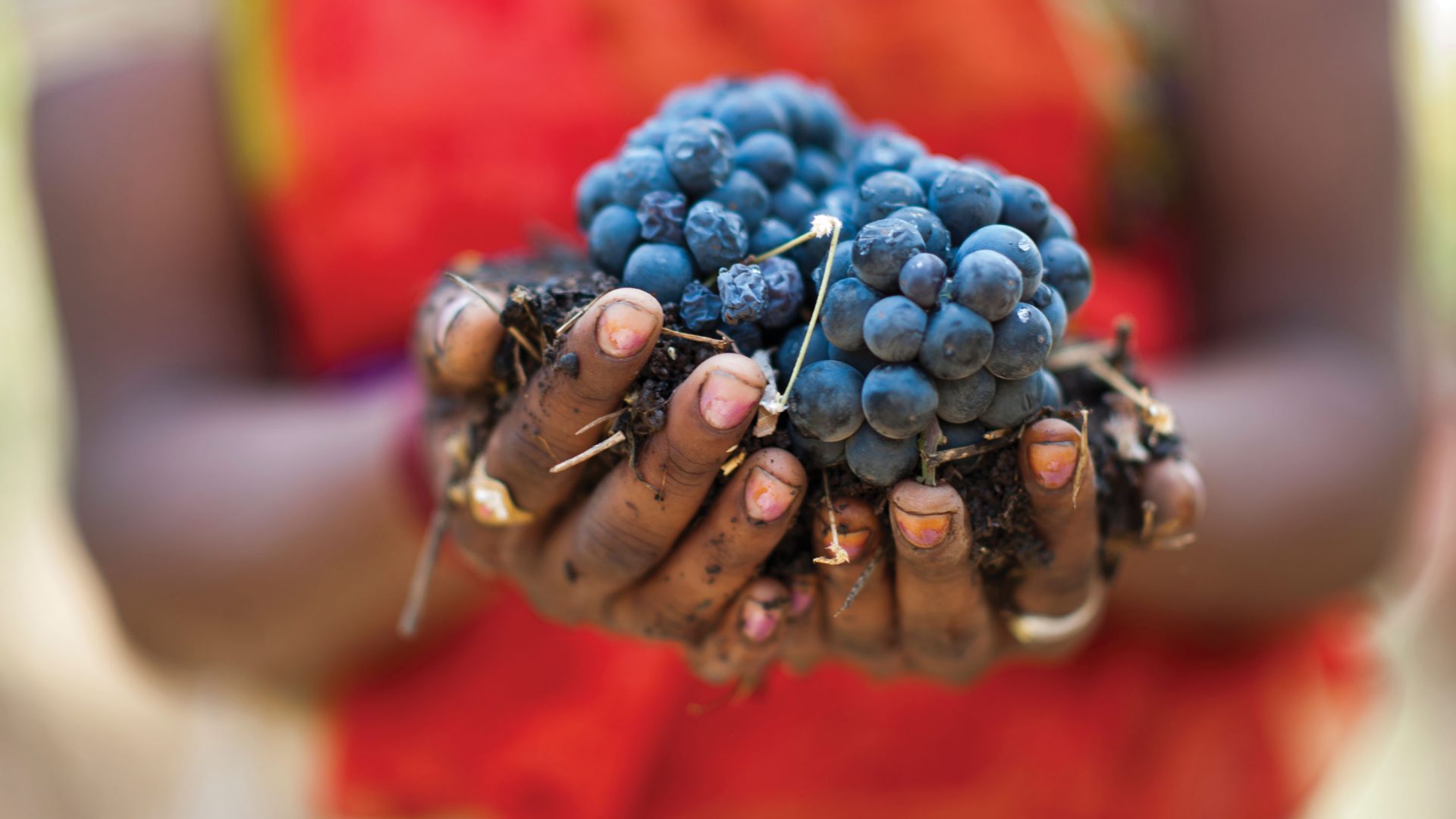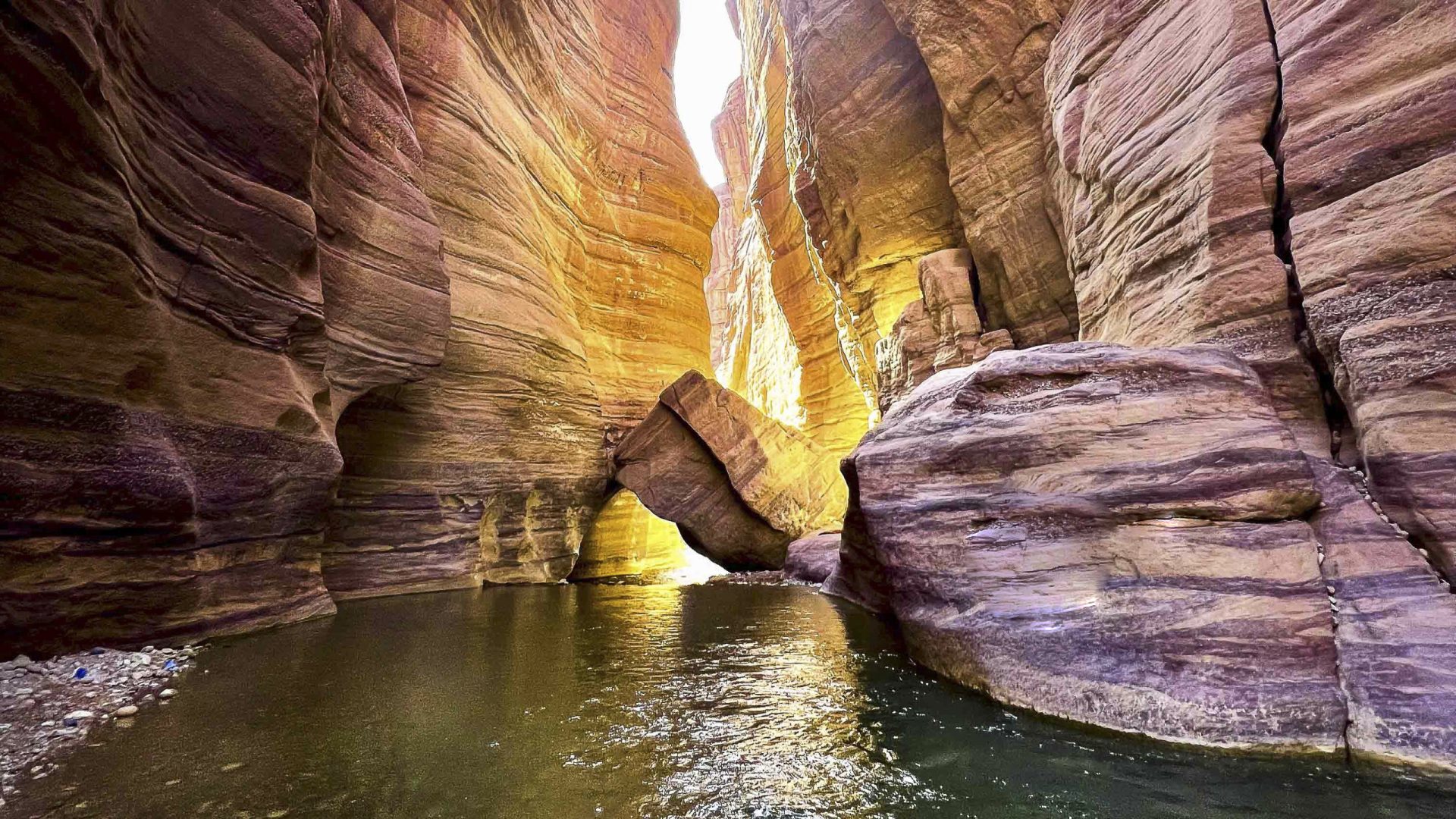“I would normally take visitors inside the vines and off the main path, but it’s snake season…” our sommelier and guide, Qussai Allouze tells us. Perhaps too casually, before glancing down to check if anyone is wearing sandals.
I’m at Haddad Estates, a family-run vineyard on the Mafraq Plateau in eastern Jordan, where the soil is volcanic, grapevines look way too lush for desert weather, and the footwear suddenly matters. It’s Jordan’s first winery, having opened in 1975 and now celebrating 50 years. Just eight miles from the Syrian border and near the newly designated UNESCO site of Umm el-Jimāl, the estate sits 2,750 feet (840 meters) above sea level on what was once forested land.
Today, its basalt-rich soil and abundant underground water make it fertile for agriculture—and, perhaps surprisingly in this predominantly Muslim corner of the Levant, for winemaking. With only two commercial wineries in Jordan—Zumot and Haddad—and wine tourism only in its early days, one thing’s clear: This won’t be your typical vineyard visit.



